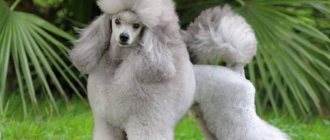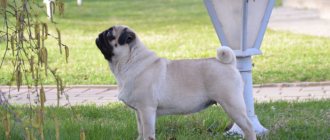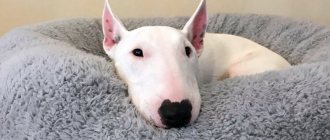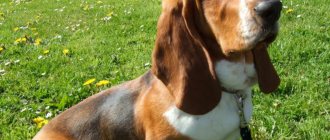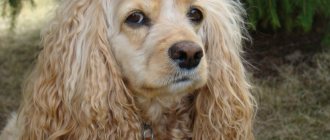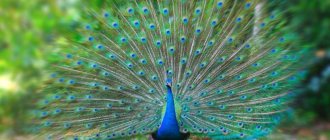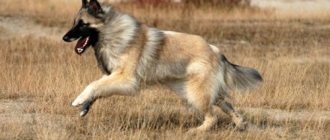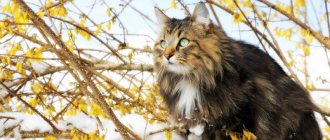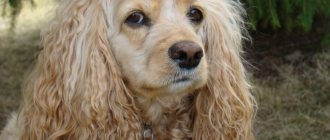The main opinion regarding dog breeds that society classifies as fighting dogs is that they are unbridled aggressors, angry jocks, ready to start a fight with other animals or people at any moment. The same applies to bull terriers. But this opinion is very far from the truth. The owners of these snow-white, robust dogs, and this color is the most common, will immediately note their extraordinary devotion, playfulness, love and a lot of other positive qualities.
In this article we will figure out who the bull terrier really is - a ferocious killer or an excellent companion, how to properly raise such a pet, what to feed and how to properly care for it.
History of the origin of the breed
Bullies, like many terriers, were bred in Great Britain. In distant harsh times, the main entertainment for people was baiting bulls with dogs. English bulldogs took part in such fights. And they coped with their responsibilities well.
In 1835, such cruel entertainment was banned. The search began for new exciting ways to spend time. The most popular were dog fights and rat baiting. English bulldogs, with their short muzzles and high paws, were not suitable for the role of nimble fighter and rat catcher.
Crossing of bulldogs with other breeds began. Terriers turned out to be one of the most promising. They were chosen because of their speed of movement, dexterity and ability to make quick decisions. The resulting dogs, called “Old Bull and Terriers,” were ugly, had crooked legs and a strangely oval shaped skull, but they coped with the duties of fighters perfectly.
The ugliness of the new dogs worried dealer and dog lover James Hinks. He began breeding the breed in 1850, deciding to improve the external qualities of the dogs, but retain the fighting qualities. Out of commercial interest, he decided to breed a snow-white dog, so the Old English Terrier and Dalmatian were brought into the selection.
The first representative of the breed was shown at an exhibition in Birmingham in 1862. This was a completely new type of dog, to which the breeder gave a simple name - Bull Terrier. They turned out to be smart, active, inquisitive and very loyal. At the same time, the force with which the dogs clenched their jaws in a fight was simply phenomenal - almost 25 atmospheres.
Photo: wikimedia.org
The breeders of the original Old Terriers were hostile to the appearance of snow-white bull terriers. They spread the opinion that a beautiful dog cannot be a full-fledged defender and fighter. Hinks offered them a bet: he pitted the bull terrier bitch Puss against an old type bitch. At the same time, Puss was almost 20 pounds lighter than her opponent. The dog fight did not last even half an hour: Puss dealt with her opponent without receiving serious damage.
Why is the Bull Terrier considered the most dangerous dog?
The fault for the breed's controversial reputation lies with the breeders. Trying to make money by selling fashionable dogs with unusual appearance, many of them did not care at all about the character of the animals.
They crossed breeders uncontrollably and did not select for such qualities as having a stable psyche and lack of aggression.
The real danger to others is not the real boule, but the mestizo. Such a dog does not correspond to the basic characteristics of the breed, even if outwardly it does not differ from a purebred animal. Therefore, before buying a dog of this breed, it is important to find out its origin.
Ordinary owners are also to blame for the nickname “killer dog” being attached to bulls. Some of them used dogs for other purposes and deliberately developed anger towards people in them.
An aggressive bull terrier, having tasted the fight, becomes unpredictable. The dog strives to re-enter the fight in order to once again experience the feeling of victory.
Such a dog is very dangerous for humans and other animals.
On a note. The force of compression of the boule's jaws is about 25 atmospheres. Therefore, it is extremely difficult to open them. If the bull has grabbed the victim, you can open the dog's mouth by bringing a broken ampoule of ammonia to the muzzle, or using a stick used as a lever.
Description of the breed
Note that the bull terrier bred by Hincks did not exist in this form for long. Selection continued, and in 1928 a male was bred, which became the model of the modern bull terrier. It was Lord Gladiator, whose head was already almost close to modern standards and very much resembled an egg.
The new dogs were distinguished by good health and their life expectancy was 11-14 years.
Colors
Initially, breeders bred a white dog, anticipating high interest in it among aristocrats. Subsequently, crossing with Amstaffs occurred, resulting in the first colored bull terriers. Their appearance was met with hostility; opponents protested the decision of the judges of the exhibition, where such a dog won. In their opinion, breeding colored bull terriers was supposed to destroy the breed.
However, the appearance of dogs of other colors saved her, freeing her from diseases that began to appear as a result of the depletion of the gene pool during the selection of snow-white individuals.
Allowed colors:
- white is considered the main color for the breed. Markings are allowed and must be located strictly on the head. There are often bull terriers whose entire body
- covered with dark spots reminiscent of the color of a Dalmatian. Absolutely snow-white dogs are considered albinos;
- brindle – there are frequent black stripes on a red background;
- tri-color - black predominates with a small amount of white and red tan marks. Often this color resembles a Rottweiler or Doberman;
- red color. Currently, more and more individuals are of all shades of red or brown. The dog may be completely red or have white spots located on the chest, paws or face;
- Colors of blue, sand, and gray are considered unacceptable.
Photo: pixabay.com
Standard
- the weight of a bull terrier does not depend on gender and varies between 23-30 kg;
- height at the withers in females can reach 40 cm, in males up to 55 cm;
- The bull terrier's coat is dense, thick and tough;
- the head is shaped like an egg, lowered down;
- the lower jaw has clear outlines;
- erect ears with strong cartilage. It is currently impossible to see a Bull Terrier with cropped ears; this was prohibited back in 1895;
- eyes are one of the distinguishing features of the breed. It is officially recognized that they have a triangular shape. Blue eyes will result in disqualification;
- the teeth are large, strong and very sharp;
- the bite is scissor-shaped; the tail is thick and strong at the base, tapering at the end. Set low;
- the bull terrier's structure is compact, but at the same time harmoniously developed and muscular;
- the nose should have even pigmentation. Pink, sand, or flesh-colored pigments are not acceptable.
Photo: flickr.com
Breed varieties
The FCI identifies breed varieties: Staffordshire, dwarf (mini), English bull terriers.
The Staffordshire is not much like its brother, it is slower.
The mini bull terrier standard provides for all the same requirements that apply to regular bull terriers. But from the name of the breed it becomes clear that the difference between the species lies in their size. In addition, the mini brothers are subject to more stringent weight requirements. The height of a decorative bull terrier should not be more than 35 cm, and its weight should be between 11-15 kg. If such indicators are exceeded, the dog will look awkward, like a beefy, beefy guy with short legs.
Photo: pixabay.com
Similar breeds
We can say that most fighting breed dogs have something in common. Due to its external uniqueness, the Bull Terrier is very difficult to confuse with any other breed.
Pakistani Bull Terrier
Another name for the breed is Gull Terrier. Dogs have many similar traits, being close relatives. But the Pakistani has a smooth and wide head shape, not an egg shape.
In addition, Gull Terriers are taller (up to 68 cm at the withers) and heavier (up to 50 kg).
Otherwise, English and Pakistani bull terriers are almost identical.
Photo: wikimedia.org
Pit bull terrier, american stafford
The most famous fighting dog breeds in our country, mentioned together with bull terriers in scary stories about dog attacks. They are united by enormous energy and power, but not anger and aggression. Only improper upbringing can turn these three into uncontrollable killers.
Photo: wikimedia.org
Types of pets
There are 4 types of the Bull Terrier breed that are allowed by the standards.
This:
- Bulldog.
- Terrier.
- Intermediate type.
- Dalmatian.
Bulldog
Distinctive features are compactness, massiveness, powerful bones, strong neck and wide chest. Such dogs are stockier and stronger, have elastic hips and a powerful body.
This type is quite rude, disproportionate and energetic, and also has a number of disadvantages:
- Short legs.
- Squatness.
- Short neck.
- Raised shoulders.
Terrier
The terrier type is distinguished by precision of lines, compactness and proportionality of the body . Typically, dogs of this type have lighter bones, a short back, straight and rather high limbs.
The disadvantages include:
- Lack of strength and energy.
- The frame is too light for this breed.
- Narrow chest.
- Excessive ease of movement.
Dalmatian
This type is distinguished by a neat and proportional exterior, a long neck and graceful limbs. The head of such pets is very long, but neat, the sides are flat, the muzzle is elongated and the tail is long.
Some representatives resemble a hound, which in no way corresponds to the standards of the bull terrier breed.
Intermediate
Intermediate type dogs took on the qualities of the other three . The head of such pets is proportional and has a slightly elongated shape. The neck is long and strong, the shoulder blades are set correctly, the paws are straight, the chest is wide. The tail is horizontal and low set.
This type of dog is less rough than the bulldog type, but stronger than terriers . At the same time, such a dog is quite compact, well built, but does not have grace.
Character and behavioral characteristics
Let us highlight the main features of the Bull Terrier:
- stubbornness;
- constant desire to dominate;
- congenital zoo aggression;
- does not have genetically inherent aggression towards humans. Puppies that showed aggression towards humans were discarded during selection;
- loves children.
When getting such a dog, you need to understand that the owner must take a dominant position relative to the pet. The relationship between the bull terrier and other animals in the house will be very difficult - he will be dangerous for them if the owner cannot put him in his place. Although in many families several bull terriers coexist, living side by side with cats and domestic rodents.
This is how they can get along with cats.
What do boys and girls look like and how are they different?
Bull Terrier boys are in most cases larger than girls, have stronger bones, and are also much more active and aggressive. They are born fighters and guards. Males of this breed are less tolerant of small children and other animals.
At the same time, bitches are more affectionate and flexible.
Girls look more graceful, have lighter bones and a whiter, more harmonious physique . At the same time, they are inferior to males in strength, speed and aggression. Girls are much more tolerant of children and more often find a common language with pets.
NOTE!
In bull terriers, gender inequality is quite developed, so males are often more devoted to female owners, and females prefer the company of male owners.
Education and training
Raising a bull terrier puppy must be done from the very first days of being in a new home. In addition to accustoming to a nickname, you need to introduce the baby to the inhabitants of the house and the rules established in it. It’s good if children, whom the puppy must obey, take part in the training process.
Watch how the bull plays with the baby.
Particular attention should be paid to the rules of behavior on the street. Often the owner cannot get used to the change in behavior when a calm dog suddenly becomes angry and uncontrollable on the street, and given his size and strength, this can become a huge problem.
It is in relation to the Bull Terrier that we can strongly advise inviting a professional instructor to help or attending training courses.
Long walks and very active games will be very helpful in raising your pet. Be sure to walk your bull terrier before bed so that he can relieve the energy seething in him.
A child cannot walk with a bull terrier. Remember that children will not be able to stop animal fights.
Basic rules for training a small bull terrier:
- teach him to share toys and food;
- if the baby is tired, stop training;
- do not scold for an unfulfilled command, but achieve execution by repetition;
- be sure to encourage during training.
Don’t forget about the obligatory attribute of walks – a muzzle.
It is definitely worth learning how to extinguish conflicts, since even the most balanced representative of the breed can react to the aggressive grin of another dog. To stop the fight, you need to lift the bull terrier's hind legs and fix them between your legs. This way he will have no room for maneuver. Sometimes you may need an object to open your jaw.
If he bares his teeth and growls at another dog, simply restrain him so that the collar is taut.
Photo: flickr.com
Is it worth getting such a pet?
People who do not have time should not get a Bull Terrier, as the dog requires long, active walks. Characteristics of the Bull Terrier breed require a serious approach to training and socialization of the dog.
Note! The breed should be owned by a person who is capable of long-term training of a pet.
The animal must understand that a person must be obeyed. In the wrong hands, a dog can turn into a dangerous, aggressive beast. Therefore, beginners and people with mental illness are also not recommended to choose this breed as a pet.
If a family lives in a private home and already has experience raising dogs, a bull terrier is suitable for protecting the territory; the puppy will quickly get used to the new home and establish contacts with other pets. There the dog will have somewhere to frolic, and a powerful jaw with a set of strong teeth will scare away uninvited guests.
The bull terrier finds its lovers among breeders. A mischievous, active dog will be a faithful friend in a family with children and will not cause any trouble in caring for its coat. But the dog’s stubborn character and fighting genes require strict discipline during training. Only a person who can cope with the pet’s difficult temperament should own a pet.
Diseases
Like all dog breeds, bull terriers are prone to a number of diseases:
- deafness;
- acrodermatitis. Characterized by flat legs turned forward. Develops due to a lack of zinc in the body;
- renal failure;
- dislocation of the kneecap;
- heart diseases;
- dislocation of the lens, that is, its free movement in the pupil;
- various types of allergic reactions. The most common reactions are to chicken meat and insect bites, water and vegetation of water bodies;
- sunburn.
The length and quality of your pet’s life will directly depend on your attentiveness. At the first sign of discomfort, consult a specialist.
Health
In general, Bull Terriers are dogs with good health, although they are not immune to allergies.
- You need to pay attention to the bull terrier's paws, the area around the eyes, ears, area around the muzzle; if redness appears there, you need to contact a veterinary dermatologist.
- Before buying a white bull terrier, you need to make sure that it is really white and not an albino dog, the health of the latter is much weaker, so it is best to take a pet from official breeders.
Pregnancy
Puppies appear 9 weeks after mating. During pregnancy, it is necessary to review the feeding diet of the bull terrier bitch. She will need more calcium than usual. Recommendations for increasing the dose should be made by a veterinarian.
After the first signs of pregnancy appear: swollen nipples, drooping abdomen, you will need to reduce the time you spend outside, but make such trips more frequent.
You need to feed your dog more often during pregnancy. Give her more peace, find a secluded place where there are no loud noises. Before giving birth, the bitch tears out the hair around her nipples. The owner needs to take care of their hygiene by wiping them with a clean soft cloth.
If you have experience, you can prepare to give birth yourself. Otherwise, contact a specialist so as not to lose the bitch and her offspring during childbirth.
Care
Bull Terriers are unassuming dogs. They will not require special care. Naturally, periodic treatments against parasites and annual vaccinations are necessary.
A dog's ears and eyes need hygiene. It is better to use special lotions sold in pet stores. Teeth should be brushed once every two days using an attachment or a special brush and paste. Monitor for stones and bleeding.
The wool is combed out every few days using a mitten or brush. There is no need to bathe a Bull Terrier often; this is done only when it gets dirty. But considering that these dogs simply love to wallow in various bodies of water during the warm season, they have to do this more often than we would like. For snow-white pets, it is better to use a special shampoo.
Pay special attention to walks in the warm season. Treat your dog against flying insects; even a simple mosquito bite can cause severe hives and swelling.
Photo: pixabay.com
Choice of clothes
The Bull Terrier is not suitable for outdoor living. He freezes in the cold and overheats in the heat, often getting sunburned.
You will need specialized clothing selected for the season. It is better to have two or three sets: winter, autumn insulated and waterproof thin overalls.
These dogs simply love to chew and tear everything they can find in your home. Additionally, buy a whole arsenal of toys and tasty bones that will clean your teeth and help pass the time.
Feeding
The feeding diet should consist of ready-made dry food or natural food. You should not mix the two directions; the digestion of bull terriers reacts very sharply to such changes.
When choosing ready-made food, you need to focus on the premium class, taking into account the diseases and age of the pet.
When creating a natural diet, consult your veterinarian for advice on choosing a vitamin complex.
Natural nutrition should contain:
- raw meat, always lean;
- eggs (preferably quail);
- olive oil (1 tsp every day);
- beef by-products, trimmings;
- cereals – preferably rice and buckwheat;
- low fat fermented milk products;
- vegetables.
Eliminate from your diet:
- river fish;
- smoked and sweet;
- high fat meat;
- hot, salty, spices;
- bakery products.
Here is an example of a holiday lunch.
Tips for choosing puppies
Almost two hundred years of selection was aimed at breeding individuals whose blood will no longer have aggression towards humans, and whose psyche will be stable. Therefore, both in the past and now, it is worth choosing a puppy only in reputable nurseries.
The optimal age for purchase is 2.5-3 months. At this age it is best to begin socializing the baby. When choosing, pay attention to the hearing of the small bull terrier. It is tested, for example, with a squeaking toy.
Consider the parents; even a layman can notice deviations from the standard in such a breed.
Price and where to buy a puppy
The price for puppies ranges from 35 to 90 thousand rubles. Everything will depend on the reputation of the nursery, the pedigree of the parents and the prospects of the puppy. Please note that the pedigree was issued by the RKF.
Choosing a nickname
| For girls | Bessie, Zoe, Mickey, Ronnie, Denna, Devi, Abby, Chloe, Hallie, Zena. |
| For boys | White, Baron, Graham, Tucker, Dustin, Khaki, Cody, Rocky, Zeus, Yarmak. |
Owner reviews
Irina K.
My husband got a bull terrier, he was like a little white cloud. Affectionate and sweet beyond belief. He grew into a wayward impudent man who didn’t give a damn about commands and rules. We suffered a little, then a couple of conflicts happened in the yard: I got into a fight with a dog, almost killed a cat. I had to take courses. I went with my husband. It was very difficult, difficult. It seems that everything has passed, all the problems are behind us. Now she is a smart and affectionate dog, an excellent guard. He only snores loudly, but he knows how to smile)
Vyacheslav S.
I’ll say right away that the dog is very serious. Before that, I had an American Stafford for 13 years. I think this is a less stubborn dog. Bull Terriers are like children all their lives, they always play and jump. Constantly checks for authority. Well, they are noble pigs. Any puddle is their favorite pastime. I thought he would fight with me and he doesn’t know how, he never aggressively. After the first fight, which was not provoked by him, the first one goes to attack any animal. I learned to restrain and separate. This will be difficult for a woman or child.
Attitude towards children
A bull terrier and children can live peacefully in the same house, provided that there is a clear hierarchy in the family and the dog understands that the child occupies the highest level. In this case, the dog will become an excellent playmate and will calmly endure all the pranks.
However, the child must understand that a dog is not a toy and should not be teased or offended.
On a note. Even a well-mannered bull is capable of unintentionally harming a child. Having played too much, the dog may not calculate the grip. Therefore, owners should ensure that the bull terrier and the child are never left alone.
Photo
Photo: wikimedia.org
Photo: wikimedia.org
Photo: wikimedia.org
Photo: needpix.com
Photo: flickr.com
Photo: flickr.com
Photo: flickr.com
Photo: flickr.com
